




Do you have a question about the Brother HL-L8260CDW and is the answer not in the manual?
Overview of the technical reference manual, covering emulation modes, commands, and useful ideas for printer operation.
Outlines four general areas where the printer can be used: word processing, spreadsheets, graphics, and programming.
Lists PCL commands, control codes, and escape sequences for printer control.
Overview of PCL emulation, features like graphics, fonts, and page control.
Details control codes, escape sequences, and environments for printer operation.
Covers commands for managing print jobs, including page size, media type, and output tray selection.
Explains font types, sources, selection criteria, and commands for managing fonts.
Describes commands for vector, raster, and rectangle graphics, including source, pattern, and destination settings.
Details the purpose, definition, running, and handling of macros for automating printer tasks.
Explains features for requesting and receiving printer status information, including memory and entity status.
An alphabetical index of commands and topics covered in the chapter.
Describes enhanced commands for PCL5C emulation, noting compatibility with PCL5e.
Explains B/W, Simple Color, PCL Color, and HP-GL/2 Color modes for printing.
Details commands for setting and managing colors using palettes, including red, green, blue values.
Covers commands for raster transfer, destination width/height, scale algorithm, and entering HP-GL/2 mode.
Explains commands for render algorithm, monochrome mode, gamma correction, and dither matrix download.
Describes specific HP-GL/2 commands like Initialize Set Instruction, Pen Color, Number of Pens, and Color Range.
An alphabetical index of topics covered in the chapter.
Lists HP-GL/2 commands with their functions, including initialization, pen control, and plot instructions.
Introduces HP-GL/2 graphics mode for producing vector graphics output.
Defines key terms used in HP-GL/2 graphics language, such as Picture Frame, Anchor Point, and Graphics Window.
Explains the structure of HP-GL/2 commands, including mnemonics, parameters, separators, and terminators.
Details units, scaling points (P1, P2), scaling, and transformation for the graphics window.
Covers setting up the graphics window, using existing image plots, printing, and entering/quitting HP-GL/2 mode.
Provides detailed explanations of HP-GL commands, categorized into initialization, plot area, pen control, polygon group, plot function, and character plot.
An alphabetical index of commands and topics covered in the chapter.
Explains Printer Job Language (PJL) features for job status control, printer language switching, and status readback.
Details the requirements for using PJL commands correctly, including syntax, format, and job structure.
Lists PJL commands categorized into Kernel, Job Separation, Environment, Status Readback, and Device Attendance.
Explains essential PJL commands like UEL, EXECUTE, COMMENT, and ENTER for job control.
Details JOB and EOJ commands for determining job boundaries and providing status information.
Describes printer environments, including factory defaults, user defaults, current settings, and modified print environments.
Explains how to request and interpret printer status information, including synchronization and response formats.
Covers commands for changing display messages on the printer control panel and setting printer states.
An alphabetical index of PJL commands and topics covered in the chapter.
Lists Epson FX-850 mode commands, including control codes and escape sequences.
Explains how to control HL-Series printers supporting Epson FX-850 emulation via programs or software.
Details points to consider when using Epson FX-850 mode, including ignored commands and resolution.
Defines conventions and syntax used in the Epson FX-850 emulation description.
Details how to invoke commands using control codes or escape sequences, and the use of the control panel.
Explains basic printer operations using control codes and escape sequences, including Null, Bell, Space, Backspace, CR, LF, FF.
An alphabetical index of commands and topics covered in the chapter.
Lists commands for IBM Proprinter XL emulation, including control codes and escape sequences.
Explains how to control HL-Series printers supporting IBM Proprinter XL emulation via programs or software.
Details points to consider when using IBM Proprinter XL mode, including ignored commands and resolution.
Defines conventions for syntax and data representation used in the Proprinter XL emulation description.
Covers basic printer operations using control codes and escape sequences, including Null, Bell, Space, Backspace, CR, LF, FF.
An alphabetical index of commands and topics covered in the chapter.
Introduces bar code printing capabilities in HP LaserJet, EPSON FX-850, and IBM Proprinter XL emulation modes.
Explains the command for creating bar codes or expanded characters using parameters.
Details parameters for bar code commands, including Bar Code Mode, Style, Scaling, and Human Readable Line.
Provides example program listings for printing bar codes and expanded characters.
Lists HP-GL commands with their functions, including initialization, pen control, and plot instructions.
Introduces HP-GL graphics mode emulation and its default measurement unit.
Provides detailed explanations of HP-GL commands, categorized into initialization, plot area, pen control, polygon group, plot function, and character plot.
An alphabetical index of HP-GL commands and topics covered in the chapter.
Explains the function of printing multiple copies of a page, selecting paper trays, and registering macros.
Details each function, including carbon copy mode, number of copies, paper tray selection, and additional macro settings.
Provides details on usable emulation, tray selection, duplex setting, user-defined paper, reprint function, and spool data.
Provides recommended command strings for two-page print jobs, illustrating HBP mode usage.
Lists paper sizes supported by PCL5 commands across various HL models.
Compares PJL TRAYCOMMAND support for normal mode across different HL models.
Compares PJL TRAYCOMMAND support for special mode across different HL models.
Lists other PCL5 commands supported by various HL models.
Details typeface selection for PCL commands across different HL models.
Compares HP-GL/2 command support across different HL models.
Compares Epson FX-850 emulation support across different HL models.
Compares IBM Proprinter XL emulation support across different HL models.
Compares bar code command support across different HL models.
Compares HP-GL command support across different HL models.
Compares PJL command support across different HL models.
Lists general PJL environment variables and their support across various HL models.
Introduces Flash/Card commands applicable to specific HL series printers for reading/writing data.
Explains how to interpret the card command specification, including abbreviations for available devices.
Lists and describes commands for selecting storage devices, formatting, saving data, fonts, and macros.
Details how to execute macros and use downloaded fonts from the card using PCL.
Explains how to use card commands from PostScript emulation for reading/writing data on hard disks.
Provides meanings and codes for HBP mode commands, including system-level commands.
Explains the command to enter HBP mode and the conditions under which it operates or reports an error.
Lists and describes HBP commands, including resolution, economy, sleep, mode, engine, graphic data, and formfeed commands.
Provides recommended command strings for two-page print jobs, illustrating HBP mode usage.
Covers general specifications and command reference lists for MX-2000 series Mailbox units and their installation.
Explains the general specifications of Mailbox units, including their function as stacker, sorter, and mailbox.
Lists and describes specific commands for Mailbox unit functions, including PJL and PCL output tray settings.
Covers general specifications and command reference lists for FS-5050 Finisher/Stapler units.
Explains the function of the Finisher/Stapler unit as a stacker, sorter, and mailbox.
Lists specific commands for Finisher/Stapler unit functions, including PJL and PCL output tray settings.
Overview of the technical reference manual, covering emulation modes, commands, and useful ideas for printer operation.
Outlines four general areas where the printer can be used: word processing, spreadsheets, graphics, and programming.
Lists PCL commands, control codes, and escape sequences for printer control.
Overview of PCL emulation, features like graphics, fonts, and page control.
Details control codes, escape sequences, and environments for printer operation.
Covers commands for managing print jobs, including page size, media type, and output tray selection.
Explains font types, sources, selection criteria, and commands for managing fonts.
Describes commands for vector, raster, and rectangle graphics, including source, pattern, and destination settings.
Details the purpose, definition, running, and handling of macros for automating printer tasks.
Explains features for requesting and receiving printer status information, including memory and entity status.
An alphabetical index of commands and topics covered in the chapter.
Describes enhanced commands for PCL5C emulation, noting compatibility with PCL5e.
Explains B/W, Simple Color, PCL Color, and HP-GL/2 Color modes for printing.
Details commands for setting and managing colors using palettes, including red, green, blue values.
Covers commands for raster transfer, destination width/height, scale algorithm, and entering HP-GL/2 mode.
Explains commands for render algorithm, monochrome mode, gamma correction, and dither matrix download.
Describes specific HP-GL/2 commands like Initialize Set Instruction, Pen Color, Number of Pens, and Color Range.
An alphabetical index of topics covered in the chapter.
Lists HP-GL/2 commands with their functions, including initialization, pen control, and plot instructions.
Introduces HP-GL/2 graphics mode for producing vector graphics output.
Defines key terms used in HP-GL/2 graphics language, such as Picture Frame, Anchor Point, and Graphics Window.
Explains the structure of HP-GL/2 commands, including mnemonics, parameters, separators, and terminators.
Details units, scaling points (P1, P2), scaling, and transformation for the graphics window.
Covers setting up the graphics window, using existing image plots, printing, and entering/quitting HP-GL/2 mode.
Provides detailed explanations of HP-GL commands, categorized into initialization, plot area, pen control, polygon group, plot function, and character plot.
An alphabetical index of commands and topics covered in the chapter.
Explains Printer Job Language (PJL) features for job status control, printer language switching, and status readback.
Details the requirements for using PJL commands correctly, including syntax, format, and job structure.
Lists PJL commands categorized into Kernel, Job Separation, Environment, Status Readback, and Device Attendance.
Explains essential PJL commands like UEL, EXECUTE, COMMENT, and ENTER for job control.
Details JOB and EOJ commands for determining job boundaries and providing status information.
Describes printer environments, including factory defaults, user defaults, current settings, and modified print environments.
Explains how to request and interpret printer status information, including synchronization and response formats.
Covers commands for changing display messages on the printer control panel and setting printer states.
An alphabetical index of PJL commands and topics covered in the chapter.
Lists Epson FX-850 mode commands, including control codes and escape sequences.
Explains how to control HL-Series printers supporting Epson FX-850 emulation via programs or software.
Details points to consider when using Epson FX-850 mode, including ignored commands and resolution.
Defines conventions and syntax used in the Epson FX-850 emulation description.
Details how to invoke commands using control codes or escape sequences, and the use of the control panel.
Explains basic printer operations using control codes and escape sequences, including Null, Bell, Space, Backspace, CR, LF, FF.
An alphabetical index of commands and topics covered in the chapter.
Lists commands for IBM Proprinter XL emulation, including control codes and escape sequences.
Explains how to control HL-Series printers supporting IBM Proprinter XL emulation via programs or software.
Details points to consider when using IBM Proprinter XL mode, including ignored commands and resolution.
Defines conventions for syntax and data representation used in the Proprinter XL emulation description.
Covers basic printer operations using control codes and escape sequences, including Null, Bell, Space, Backspace, CR, LF, FF.
An alphabetical index of commands and topics covered in the chapter.
Introduces bar code printing capabilities in HP LaserJet, EPSON FX-850, and IBM Proprinter XL emulation modes.
Explains the command for creating bar codes or expanded characters using parameters.
Details parameters for bar code commands, including Bar Code Mode, Style, Scaling, and Human Readable Line.
Provides example program listings for printing bar codes and expanded characters.
Lists HP-GL commands with their functions, including initialization, pen control, and plot instructions.
Introduces HP-GL graphics mode emulation and its default measurement unit.
Provides detailed explanations of HP-GL commands, categorized into initialization, plot area, pen control, polygon group, plot function, and character plot.
An alphabetical index of HP-GL commands and topics covered in the chapter.
Explains the function of printing multiple copies of a page, selecting paper trays, and registering macros.
Details each function, including carbon copy mode, number of copies, paper tray selection, and additional macro settings.
Provides details on usable emulation, tray selection, duplex setting, user-defined paper, reprint function, and spool data.
Provides recommended command strings for two-page print jobs, illustrating HBP mode usage.
Lists paper sizes supported by PCL5 commands across various HL models.
Compares PJL TRAYCOMMAND support for normal mode across different HL models.
Compares PJL TRAYCOMMAND support for special mode across different HL models.
Lists other PCL5 commands supported by various HL models.
Details typeface selection for PCL commands across different HL models.
Compares HP-GL/2 command support across different HL models.
Compares Epson FX-850 emulation support across different HL models.
Compares IBM Proprinter XL emulation support across different HL models.
Compares bar code command support across different HL models.
Compares HP-GL command support across different HL models.
Compares PJL command support across different HL models.
Lists general PJL environment variables and their support across various HL models.
Introduces Flash/Card commands applicable to specific HL series printers for reading/writing data.
Explains how to interpret the card command specification, including abbreviations for available devices.
Lists and describes commands for selecting storage devices, formatting, saving data, fonts, and macros.
Details how to execute macros and use downloaded fonts from the card using PCL.
Explains how to use card commands from PostScript emulation for reading/writing data on hard disks.
Provides meanings and codes for HBP mode commands, including system-level commands.
Explains the command to enter HBP mode and the conditions under which it operates or reports an error.
Lists and describes HBP commands, including resolution, economy, sleep, mode, engine, graphic data, and formfeed commands.
Provides recommended command strings for two-page print jobs, illustrating HBP mode usage.
Covers general specifications and command reference lists for MX-2000 series Mailbox units and their installation.
Explains the general specifications of Mailbox units, including their function as stacker, sorter, and mailbox.
Lists and describes specific commands for Mailbox unit functions, including PJL and PCL output tray settings.
Covers general specifications and command reference lists for FS-5050 Finisher/Stapler units.
Explains the function of the Finisher/Stapler unit as a stacker, sorter, and mailbox.
Lists specific commands for Finisher/Stapler unit functions, including PJL and PCL output tray settings.
| Sustainability certificates | Blue Angel, ENERGY STAR |
|---|---|
| Color | Yes |
| N-up printing | 2, 6, 9, 16, 25 |
| Print technology | Laser |
| Maximum resolution | 2400 x 600 DPI |
| Duplex printing mode | Auto |
| Warm-up time (from sleep mode) | 29 s |
| Time to first page (black, normal) | 15 s |
| Print speed (black, normal quality, A4/US Letter) | 31 ppm |
| Duplex print speed (black, normal quality, A4/US Letter) | 7 ppm |
| Maximum duty cycle | 40000 pages per month |
| Recommended duty cycle | 0 - 3000 pages per month |
| Number of print cartridges | - |
| Page description languages | BR-Script 3, Microsoft XPS, PCL 6, PDF 1.7, XPS |
| Paper input type | Paper tray |
| Total input capacity | 250 sheets |
| Total output capacity | 150 sheets |
| Maximum input capacity | 1050 sheets |
| Total number of input trays | 1 |
| Multi-Purpose tray input capacity | 50 sheets |
| Custom media width | 76.2 - 127 mm |
| Custom media length | 215.9 - 355.6 mm |
| Paper tray media types | Bond paper, Glossy paper, Plain paper, Recycled paper, Thin paper |
| Paper tray media weight | 60 - 105 g/m² |
| Non-ISO print media sizes | Executive (184 x 267mm), Folio (media size), Letter (media size), Legal (media size) |
| ISO A-series sizes (A0...A9) | A4, A5, A6 |
| Multi-purpose tray media types | Bond paper, Envelopes, Glossy paper, Labels, Plain paper, Recycled paper, Thick paper, Thicker paper, Thin paper |
| Maximum ISO A-series paper size | A4 |
| Multi-Purpose Tray media weight | 60 - 163 g/m² |
| Wi-Fi standards | 802.11b, 802.11g, Wi-Fi 4 (802.11n) |
| Security algorithms | 64-bit WEP, 128-bit WEP, 802.1x RADIUS, EAP-FAST, EAP-MD5, EAP-TLS, EAP-TTLS, HTTPS, IPPS, IPSEC, PEAP, SMTP-AUTH, SNMP, SSL/TLS, WPA-AES, WPA-PSK, WPA-TKIP, WPA2-AES, WPA2-EAP, WPA2-PSK |
| Mobile printing technologies | Apple AirPrint, Brother iPrint & Scan, Google Cloud Print, Kindle Fire Printing, Mopria Print Service |
| Supported network protocols (IPv4) | ARP, RARP, BOOTP, DHCP, APIPA(Auto IP), WINS/NetBIOS name resolution, DNS Resolver, mDNS, LLMNR responder, LPR/LPD, Custom Raw Port/Port9100, IPP/IPPS, FTP Server, TELNET Server, HTTP/HTTPS Server, TFTP Client & Server, SMTP Client, SNMPv1/v2c/v3, ICMP, Web Services (Print), CIFS Client, SNTP Client |
| Supported network protocols (IPv6) | NDP, RA, DNS resolver, mDNS, LLMNR responder, LPR/LPD, Custom Raw Port/Port9100, IPP/IPPS, FTP Server, TELNET Server, HTTP/HTTPS Server, TFTP Client & Server, SMTP Client, SNMPv1/v2c/v3, ICMPv6, Web Services (Print), CIFS Client, SNTP Client |
| Standard interfaces | Ethernet, USB 2.0, Wireless LAN |
| Coprocessor frequency | 0.133 GHz |
| Maximum internal memory | - MB |
| Sound pressure level (printing) | 49 dB |
| Sound pressure level (quiet mode) | 44 dB |
| Display | LCD |
| Certification | Nordic Swan |
| Product color | Black, Grey |
| Display number of lines | 2 lines |
| Power consumption (off) | 0.02 W |
| Power consumption (ready) | 10 W |
| Power consumption (standby) | 70 W |
| Power consumption (printing) | 580 W |
| Power consumption (PowerSave) | 340 W |
| Energy Star Typical Electricity Consumption (TEC) | 1.8 kWh/week |
| Other operating systems supported | Android, iOS |
| Cables included | AC |
| Package depth | 533 mm |
| Package width | 617 mm |
| Package height | 521 mm |
| Package weight | 25400 g |
| Harmonized System (HS) code | 84433210 |
| Depth | 486 mm |
|---|---|
| Width | 410 mm |
| Height | 313 mm |
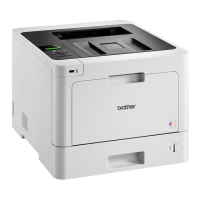

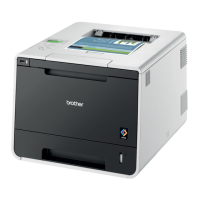

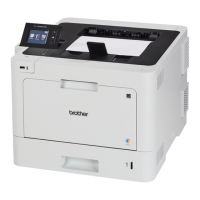


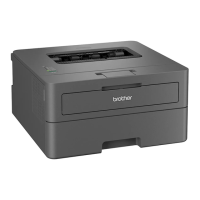
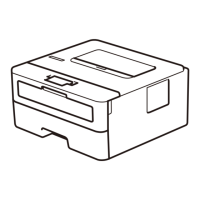
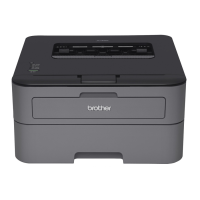
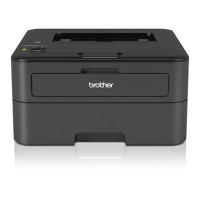
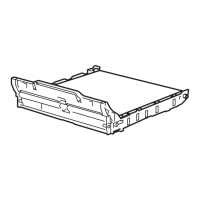
